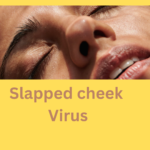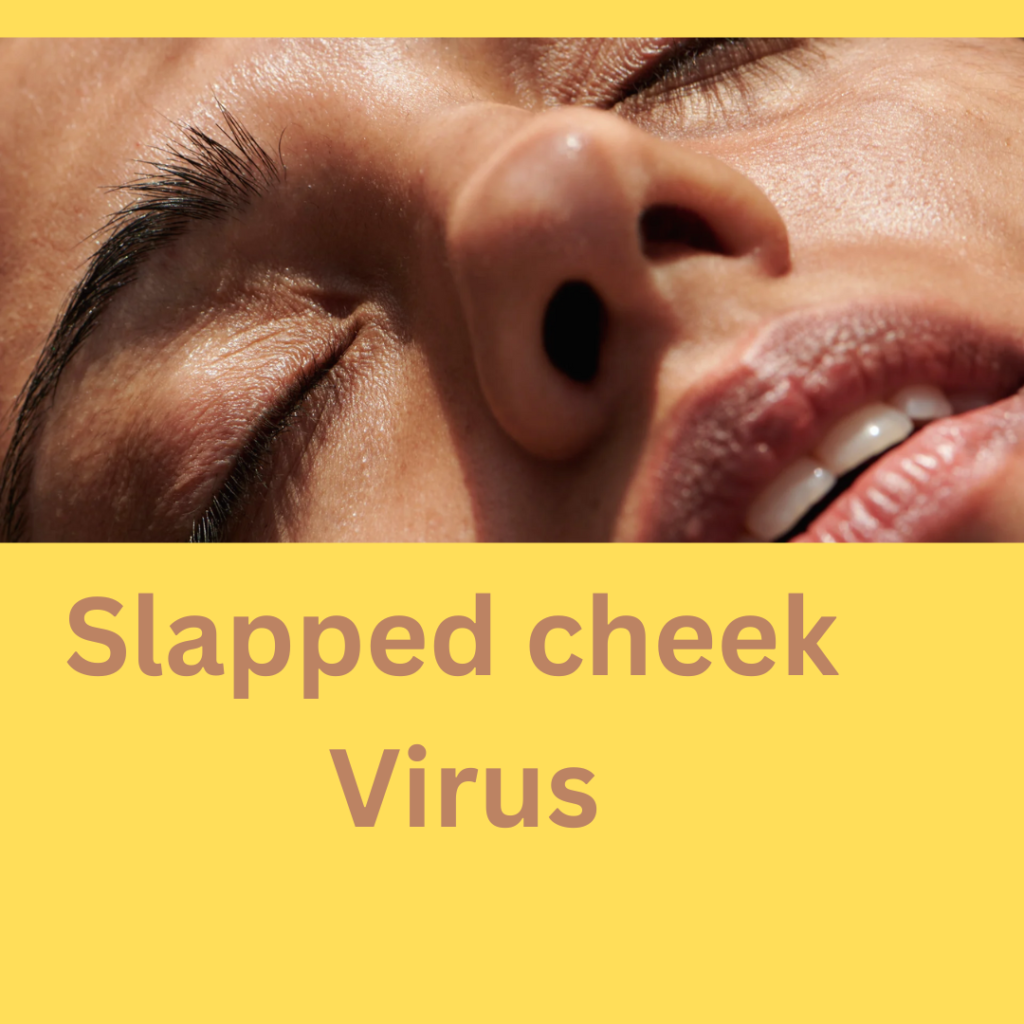What is a Slapped Cheek Virus?
Slapped Cheek Virus is part of the Parvovirus family, with Parvovirus B19 being the specific strain responsible for the illness in humans. The virus primarily spreads through respiratory droplets when an infected person coughs or sneezes. It can also be transmitted through blood products or from a pregnant mother to her fetus.
Table of Contents

Symptoms
The incubation period for Slapped Cheek Virus is typically between 4 to 14 days after exposure. During this time, the virus replicates in the body, particularly targeting the bone marrow, where it suppresses the production of red blood cells.
Stages of Slapped Cheek Virus
The symptoms of Slapped Cheek Virus generally occur in two stages:
Stage 1: Initial Flu-like Symptoms
The first stage of the infection often resembles a mild cold or flu. Symptoms may include:
- Fever
- Headache
- Runny nose
- Sore throat
- Fatigue
- These symptoms are nonspecific and can easily be mistaken for other viral illnesses. During this phase, the infected person is most contagious.
Stage 2: Rash Development
After the initial flu-like symptoms subside, the hallmark “slapped cheek” rash appears. This bright red rash typically covers both cheeks, giving the appearance of a slap. In some cases, the rash may extend to the arms, legs, and trunk, where it appears as a lace-like pattern
The rash may be itchy but is usually not painful. It is during this stage that the person is no longer contagious. However, adults infected with the virus might experience joint pain and swelling, particularly in the hands, wrists, knees, and ankles, which can last for weeks or even months.
How Slapped Cheek Virus Affects the Body
Impact on the Immune System
Slapped Cheek Virus primarily affects the body’s bone marrow, where it targets red blood cell precursors. For most healthy individuals, this temporary suppression of red blood cell production is not dangerous, as the body can compensate for the loss. However, for individuals with weakened immune systems, hemolytic anemia, or those undergoing chemotherapy, the virus can cause severe complications, including aplastic anemia—a condition where the body stops producing enough new blood cells.
Effects on Pregnant Women
For pregnant women, especially during the first half of pregnancy, Slapped Cheek Virus poses significant risks. The virus can cross the placenta and infect the fetus, potentially leading to fetal anemia and hydrops fetalis—a life-threatening condition characterized by severe edema in the fetus. In rare cases, this can result in miscarriage or stillbirth. Pregnant women exposed to the virus should seek immediate medical advice for monitoring and management.
Chronic Infection
Immunocompromised individuals, such as those with HIV/AIDS or organ transplant recipients, may not be able to clear the virus effectively. This can lead to chronic infection, where the virus persists in the body for an extended period, causing ongoing symptoms like persistent anemia and fatigue. In such cases, antiviral therapy may be necessary to manage the infection.
Joint Pain and Arthritis
In adults, particularly women, the virus can trigger a rheumatoid arthritis-like condition, characterized by joint pain, swelling, and stiffness. This condition, known as Parvovirus B19-associated arthritis, can be particularly debilitating, though it usually resolves within a few weeks to months without causing long-term damage.
Diagnosis and Treatment of Slapped Cheek Virus
Diagnosis
The diagnosis of Slapped Cheek Virus is often clinical, based on the characteristic rash and symptom history. However, in cases where the diagnosis is uncertain or complications are suspected, blood tests can be used to detect specific antibodies (IgM and IgG) against Parvovirus B19. In pregnant women or immunocompromised individuals, additional tests such as ultrasound or PCR (polymerase chain reaction) may be conducted to assess the impact on the fetus or to detect the presence of the virus.
Treatment
There is no specific antiviral treatment for Slapped Cheek Virus. Management of infection become includes:
Rest also helps the body recover.
Pain relief with over-the-counter medications such as ibuprofen or acetaminophen for fever, joint pain, and headaches.
Antihistamines may be prescribed for those experiencing severe itching due to the rash.
In cases where complications arise, such as severe anemia or chronic infection in immunocompromised individuals, medical interventions may include:
Blood transfusions for those with severe anemia.
Immunoglobulin therapy boosts the immune system and helps to fight against the virus.
Antiviral medications for chronic infection management in immunocompromised patients.
Prevention of Slapped Cheek Virus
Preventing the spread of Slapped Cheek Virus can be challenging, given that individuals are most contagious before the rash appears. However, general preventive measures include:
Frequent handwashing with soap and water.
Avoiding close contact with individuals who are sick, especially those with weakened immune systems or pregnant women.
There is currently no vaccine available for Slapped Cheek Virus, so these preventive measures are essential, particularly in settings like schools and daycares, where the virus can spread rapidly.
Conclusion
Slapped Cheek Virus is a common, generally mild infection that primarily affects children but can have serious implications for certain populations, including pregnant women, immunocompromised individuals, and those with underlying health conditions. Understanding the symptoms, potential complications, and preventive measures is crucial for managing and mitigating the impact of this virus.
For those at higher risk, early diagnosis and supportive care are key to preventing severe outcomes. As always, individuals experiencing symptoms or those who believe they have been exposed to the virus should consult with a healthcare provider for appropriate advice and treatment.







One Comment
нова година турция 2025